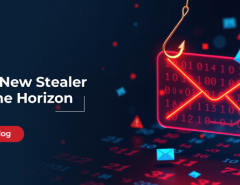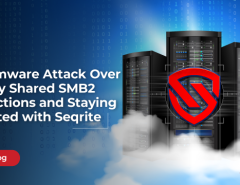While ransomware threats keep bothering businesses regardless of their stature and size, organizations are slowly but steadily resorting to proactivity, to prevent infections and potential sabotages. The most frightening aspect of ransomware attacks is the evolution and sophistication on offer. The threats are continually escalating due to higher levels of innovation. However, the underlining concept of a ransomware attack remains the same with hackers breaking into a database, encrypting the confidential information and offering the decryption key for a sizeable ransom. The attacks are usually in the form of malicious links containing malware or Trojans that can penetrate into systems and infect the same.
That said if we already know the reasons, causes, and the necessary contingency plans; why does it get difficult for us to prevent the ransomware attacks? The only explanation to this question would be the newer breeds of ransomware threats which often supersede the existing network security standards. While CISOs and IT heads are smarting under the blatant techniques involving data leakage prevention and database security, the hackers are way ahead of their time and constantly upgrading their schematics for inflicting deeper wounds.
Enlisting the Newer Breeds of Ransomware Threats
It wouldn’t be wrong to say that the ransomware landscape has evolved over the years and every organization that relies on the online domain for getting the work done is at risk. The proliferation of self-propagating security threats has been taking down the internet, rather frequently. One such example would be the WannaCry ransomware attack which leveraged a specially programmed exploit for scanning IP addresses at random and spreading across multiple devices and unpatched computers.
This exploit, better known as ‘EternalBlue’ was also used by Petya— another breed of ransomware attack which incorporated SMB spreading techniques. Although WannaCry was a pretty well-targeted threat, Petya surpassed the same, especially in terms of the ill-effects. However, the latter was restricted to Ukraine-specific organizations.
Read More: Impact of WannaCry and Petya ransomware attack
The reason why the current crop of ransomware threats are proliferating at an uncontrollable rate is that hackers are deploying the same methodology as infectious worms. If survey reports are to be believed, 2017 saw about 42 percent businesses getting affected by ransomware. In comparison to 2016, this is a 12 percent uptick which readily validates the apprehensions of the company CISOs.
Should Ransomware Threats be our Only Concern?
There are times when organizations tend to ignore other forms of cyber-attacks while strengthening the defense mechanisms against the newer ransomware breeds. However, other kinds of attacks can weaken the IT system of a company and make it vulnerable to various threats.
The first form of attack happens to be the Socially Engineered Malware which is probably the most efficient precursor to a full-fledged ransomware attack. This attack is usually initiated via malicious links and Trojan Horses. In addition to that, phishing attacks are also common when it comes to starting an organization-wide ransomware crisis. Spam emails carrying malicious links are the predominant techniques when it comes to these phishing attacks which mainly concentrates on stealing passwords and login credentials.
Unpatched software is an issue which needs to be dealt with, almost immediately. The newer breeds of ransomware threats can easily exploit these system inadequacies for gaining unsolicited access. Apart from that, businesses need to secure themselves against DDoS attacks and the APTs. While the former aims at restricting specific services and access unless the demands are met, the latter stands for Advanced Persistent Threats which gains a foothold via phishing and socially engineered attacks.
Bottom-Line
Although it’s the productivity that drives forth our entrepreneurial endeavors, it is equally important to stay immune against these lingering cyber-attacks. The approach of preventing, containing and responding to security threats is probably the most elementary handbook to organizational safety. Further, investing in high-end security products like the ones offered by Seqrite can help protect your organizational data and assets from all modern threats.
As an IT security partner for your business, Seqrite provides comprehensive endpoint security from advanced cyber threats. To know more, visit our website or




